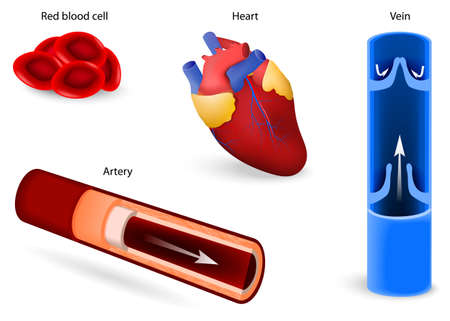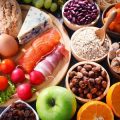Introduction: Muscle Injuries and the Importance of Recovery
Muscle injuries are a common occurrence across the UK, affecting everyone from weekend warriors playing five-a-side football in local parks to seasoned athletes and even those engaged in everyday activities. Whether it’s a strained hamstring picked up during a Sunday league match, or a torn muscle from lifting heavy shopping bags awkwardly, these injuries can disrupt both sport participation and daily routines. In a country where physical activity is encouraged for wellbeing—from parkruns to rambling in the countryside—the ability to recover well from muscle damage is crucial. Effective recovery not only speeds up a return to work or play but also reduces the risk of further injury, helping Brits maintain an active lifestyle throughout the seasons. Understanding what happens within our muscles after injury and how our choices—particularly around nutrition—can influence healing is essential for anyone keen to get back on their feet quickly and safely.
2. Understanding Protein: The Building Blocks of Muscle Repair
Protein is often described as the cornerstone of muscle repair, particularly after an injury. When muscles are damaged—whether from a sports mishap, a fall, or surgery—the body initiates a complex healing process that relies heavily on amino acids, the smaller units that make up protein. These amino acids are essential for rebuilding and strengthening muscle fibres, supporting immune response, and reducing inflammation.
In the context of British dietary habits, protein intake is typically sourced from both animal and plant-based foods. The NHS recommends that adults consume at least 0.75g of protein per kilogram of body weight daily. This can be achieved through a balanced diet that includes traditional British staples such as fish, lean meats, eggs, dairy products, legumes, and pulses.
| Food Source | Typical Serving Size | Protein Content (approx.) |
|---|---|---|
| Chicken breast (cooked) | 100g | 31g |
| Salmon (grilled) | 100g | 22g |
| Lentils (boiled) | 150g | 12g |
| Eggs (2 medium) | 88g | 12g |
| Greek yoghurt (low-fat) | 150g | 11g |
| Baked beans (in tomato sauce) | 200g tin | 10g |
The practical implication for post-injury recovery is clear: regularly consuming adequate protein from familiar sources helps ensure the body has the necessary materials to repair muscle tissue efficiently. NHS guidelines also encourage spreading protein intake evenly throughout the day—such as including eggs or yoghurt at breakfast, chicken or beans at lunch, and fish or lentils for dinner. This approach supports consistent muscle regeneration and aligns with common British eating patterns.

3. Evidence-Based Recommendations on Protein Intake
The current scientific consensus strongly supports the importance of adequate protein intake during post-injury recovery, with several guidelines tailored to individual needs. For adults in the UK recovering from muscle injuries, research generally suggests aiming for at least 1.2 to 2.0 grams of protein per kilogram of body weight per day, depending on the severity of the injury and overall health status. This is notably higher than the general reference intake for healthy adults, reflecting the increased demands for tissue repair and regeneration.
Optimal Protein Sources for Brits
Choosing quality protein sources is essential. Animal-based proteins such as lean British beef, free-range chicken, eggs, and dairy (like semi-skimmed milk or mature Cheddar cheese) are complete proteins, providing all essential amino acids required for muscle repair. For those following a plant-based diet, options like lentils, chickpeas, British-grown fava beans, and quinoa can be paired to ensure a full amino acid profile.
Incorporating Protein into Daily Meals
Practical examples rooted in UK food culture can make these recommendations accessible. A typical recovery-friendly breakfast might include poached eggs on wholegrain toast with grilled tomatoes. Lunch could feature a jacket potato topped with baked beans or tuna, while a hearty dinner might involve roast chicken with steamed vegetables and new potatoes. Snacks such as Greek yoghurt with berries or a handful of roasted broad beans can further boost daily intake.
Spacing Protein Intake Throughout the Day
Emerging evidence also points to the benefits of distributing protein intake evenly across meals rather than consuming most at one sitting. Aim to include 20–40 grams of protein per meal to support ongoing muscle protein synthesis throughout the day—an approach that aligns well with traditional British eating patterns of three main meals and snacks.
By following these evidence-based recommendations and making practical adjustments within the framework of UK food habits, individuals can actively support their body’s natural healing processes after injury.
4. Best British Protein Sources: Practical Food Choices
Choosing the right protein sources is essential for effective muscle repair after injury, and luckily, Britain offers a wealth of accessible options. Whether you’re a meat eater, pescatarian, vegetarian, or flexitarian, there are plenty of practical choices to suit your taste and dietary preferences. Below is a realistic guide to British protein-rich foods and how to fit them into your everyday meals.
Animal-Based Protein Sources
The UK’s traditional diet features an array of high-quality animal proteins. Here’s a quick reference table for some of the most popular options:
| Food | Typical Serving Size | Protein per Serving | How to Use |
|---|---|---|---|
| Chicken Breast (skinless) | 100g cooked | ~30g | Add to sandwiches, salads, or roast dinners |
| Beef (lean steak/mince) | 100g cooked | ~26g | Use in cottage pie, Sunday roast, or stir-fries |
| Pork Loin Chop | 100g cooked | ~24g | Grill or bake for a simple main dish |
| Canned Tuna (in water) | 100g drained | ~25g | Add to jacket potatoes or mix with sweetcorn for sandwiches |
| Salmon (fresh/fillet) | 100g cooked | ~22g | Bake with lemon or poach for breakfast on toast |
| Eggs (whole) | 2 medium eggs (~100g) | ~13g | Boil, scramble, or poach for breakfast or lunchboxes |
| Semi-skimmed Milk | 200ml glass | ~7g | Add to porridge or blend into smoothies and shakes |
| Cottage Cheese | 100g pot | ~12g | Spoon onto oatcakes or mix with chopped herbs as a snack dip |
Vegetarian & Plant-Based Protein Options in Britain
If you follow a vegetarian or mostly plant-based diet, there are still great ways to meet your protein needs for muscle repair. Here are some commonly found options across British supermarkets:
| Food | Typical Serving Size | Protein per Serving | How to Use |
|---|---|---|---|
| Lentils (cooked) | 150g (approx. 1 cup) | ~12g | Add to soups, stews, or make classic lentil cottage pie |
| Baked Beans (in tomato sauce) | 200g tin | ~10g | Spoon over wholemeal toast for a proper British breakfast |
| Quorn Mince/Chunks | 100g cooked | ~14g | Sauté in Bolognese sauce or add to curries and stir-fries |
| Tinned Chickpeas (drained) | 120g (half tin) | ~8g | Mash into houmous or toss in salads and wraps |
| Nuts & Seeds Mix | 30g small handful | ~6g | Add to porridge, yoghurt, or snack straight from the pack |
Tips for Everyday Incorporation of Protein Foods:
- Diversify sources: Mix animal and plant proteins throughout the week for variety and balance.
- Aim for every meal: Try to include some protein at breakfast, lunch, and dinner – such as eggs in the morning, chicken/tuna at lunch, and beans/quorn at tea.
- Sneak it in: Stir milk powder into mash or porridge; add extra beans/lentils to soups and stews.
A Practical Note on Portions:
You don’t need fancy products—many classic British staples provide what you need if eaten regularly. Focus on sensible portions and try not to skip meals during your recovery phase. By choosing from this realistic list of British protein foods, you’ll support muscle repair while enjoying familiar flavours.
5. Timing and Distribution: When and How to Eat Protein
Optimising protein intake isn’t just about how much you eat, but also when you eat it. Evidence suggests that spreading protein evenly throughout the day can significantly enhance muscle repair after injury. Rather than loading all your protein at dinner, aim to include a quality source of protein at each meal and snack. For Brits, this could mean starting with eggs or Greek yoghurt at breakfast, enjoying a chicken or tuna sandwich at lunch, and having lean beef, salmon, or a plant-based alternative for tea.
The Science Behind Protein Timing
Research indicates that muscle protein synthesis—the process crucial for muscle repair—is maximised when protein is consumed in regular intervals. Ideally, adults should target around 20–40g of protein per main meal, depending on individual needs and activity levels. This approach helps maintain a steady supply of amino acids to support ongoing muscle recovery throughout the day.
Practical Meal Planning for UK Lifestyles
Integrating protein into traditional British eating patterns doesn’t have to be complicated. Consider these evidence-based suggestions:
Breakfast
Porridge with milk and nuts, scrambled eggs on wholegrain toast, or low-fat Greek yoghurt with berries are all excellent choices.
Lunch
A jacket potato topped with baked beans and cheese, a classic ham or chicken sandwich on seeded bread, or lentil soup served with oatcakes deliver both comfort and nutrition.
Dinner (Tea)
Grilled fish with new potatoes and peas, a cottage pie made with lean mince, or a chickpea curry can round out your evening meal with high-quality protein sources.
The Role of Snacks
Don’t overlook snacks as opportunities to boost your daily protein intake. Options like hummus with carrot sticks, a handful of mixed nuts, hard-boiled eggs, or a small tub of cottage cheese are easy to fit into the typical UK routine—perfect for elevenses or an afternoon pick-me-up.
In summary, distributing protein intake consistently across meals and snacks supports muscle repair more effectively than consuming it in one go. By tailoring your eating habits to incorporate familiar British foods rich in protein throughout the day, you’ll be giving your body the best chance at a speedy and robust recovery from injury.
6. Common Myths in the UK and Practical Tips
Debunking Frequent Misconceptions
Despite growing awareness about nutrition, several myths about protein and muscle repair still circulate in the UK. One widespread belief is that “more protein always equals faster recovery.” In reality, the body can only use a certain amount of protein at any given time; excess intake won’t necessarily speed up muscle repair and could even burden your kidneys. Another common misconception is that plant-based proteins are inadequate for recovery. However, with careful planning—combining sources like lentils, beans, and whole grains—vegetarians and vegans can certainly meet their needs for post-injury healing.
The Truth About Protein Supplements
It’s also worth noting that many Brits assume protein powders or shakes are essential after an injury. While supplements can be helpful in some cases, most people can achieve optimal results through balanced meals featuring familiar foods such as eggs, fish, lean meats, dairy products, and legumes. The emphasis should be on overall diet quality rather than relying solely on supplements.
Practical Recommendations for Brits
- Stick to Real Food: Aim to include a source of high-quality protein with each meal. For example, enjoy a poached egg on wholegrain toast at breakfast or grilled salmon with new potatoes for dinner.
- Mind Your Portions: Adults recovering from injury typically need around 1.2–2 grams of protein per kilogram of body weight daily—spread intake throughout the day for best results.
- Don’t Forget Hydration: Proper fluid intake aids nutrient transport and overall recovery—make water or unsweetened tea your mainstay.
- Consult Qualified Professionals: If you’re unsure about how much protein you need or how to adapt your diet during recovery, seek advice from a registered dietitian or NHS specialist.
By recognising fact from fiction and following these down-to-earth strategies tailored to British lifestyles, you’ll support your body’s natural healing processes without falling prey to fads or unproven trends.
7. Summary and British Resources for Further Support
In summary, adequate protein intake is a cornerstone of effective muscle repair following injury, as supported by robust scientific evidence. For those in the UK, tailoring your diet to include high-quality protein sources—such as lean meats, dairy, eggs, and plant-based alternatives—can significantly enhance recovery outcomes. Timing matters too: distributing protein evenly throughout the day and prioritising it after rehabilitation sessions may optimise muscle rebuilding. Importantly, individual needs vary depending on age, activity level, and severity of injury; consulting with a registered dietitian or healthcare professional ensures advice is both safe and personalised.
Key Takeaways
- Protein is essential for post-injury muscle repair.
- Include a mix of animal and plant-based protein sources for optimal nutrient diversity.
- Spread protein intake across meals and snacks to support ongoing recovery.
- Seek tailored advice from qualified professionals, especially if you have underlying health conditions or specific dietary requirements.
Trusted UK Resources
- NHS – Protein in your diet: nhs.uk/live-well/eat-well/food-types/protein-in-your-diet/
- British Dietetic Association (BDA) – Food Fact Sheets: bda.uk.com/resource/protein.html
- Versus Arthritis – Nutrition and arthritis: versusarthritis.org/about-arthritis/managing-symptoms/diet/
When to Seek Help
If you are unsure about how much protein you need during recovery or are experiencing challenges with eating due to your injury, reach out to your GP or a registered dietitian. Many NHS trusts also offer community-based nutrition support services. For additional peer support and trustworthy information, local charities such as Sporting Recovery can be valuable allies during rehabilitation.
Final Thought
Your journey back to full strength is unique—equip yourself with evidence-based knowledge and make the most of reputable British resources to guide your recovery.


